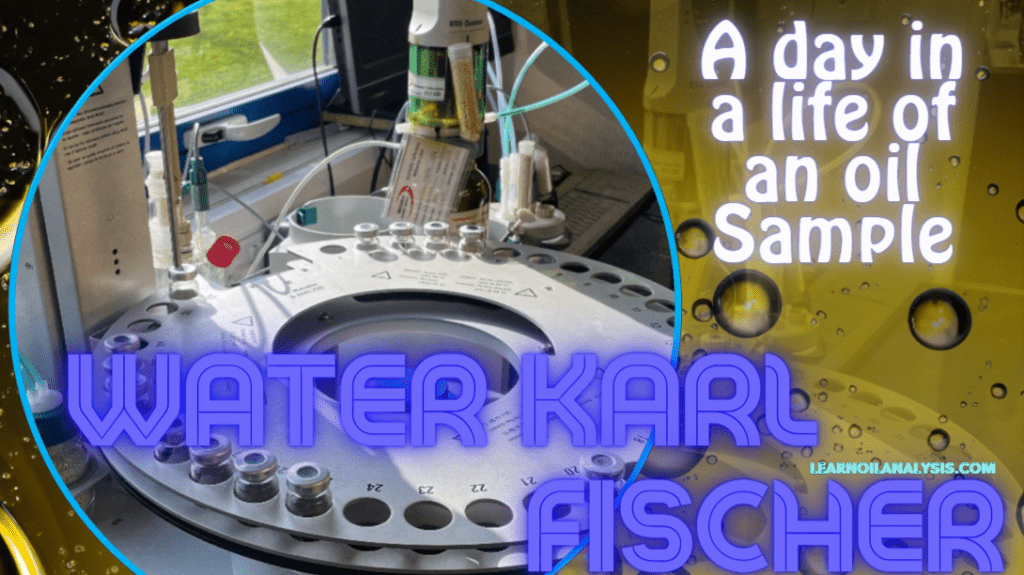A Day In The Life Of An Oil Sample Karl Fisher Water
Have you ever wondered what happens to your oil after you’ve sent it to our laboratory? In this blog series, we will be discussing some of the tests your oil may be put through and how they give us an insight into the health of your equipment.
Karl Fischer Water Titration (KF).
If your oil sample fails its crackle test, the KF test is one of the most common ways we detect how much water is in your oil and can go down to really low levels as low as a few ppm in detection.
How it works?
The oil sample is weighed into a vial alongside a blank vial per batch. The ambient air in the blank vial is first tested to obtain what natural levels of water vapour are in the air as this will differ depending on the outside environment and is subtracted from the overall results. The oil is heated up to around 160’C to turn the water in the liquid to water vapour. A large needle pand headspace vapour above the sample is tested with iodine solution to detect how much water is present in the vapours. The blank used at the start is subtracted from the final oil vapour figure. A figure measured in milligrams per kilogram is produced based on the sample weight and vapour that reacts with the iodine.
What does it tell us?
The KF test gives us an accurate level of water present in your oil. Abnormally high levels of water in oil can cause damage in your equipment by disrupting the viscosity of your oil, causing it to be too thick or thin for purpose. In electrical oils it it can impact breakdown voltage strength and its insulating properties.
Depending on the oil type being tested, the limits on safe water will differ e.g.,
- Engine oils ~ 2000ppm
- Gearboxes ~ 4000ppm
- Hydraulic ~1000ppm.
- Critical Hydraulics, compressors and Turbines sometimes under 500ppm
- Electrical oils between 10ppm and 30ppm depending on voltage of the system.
For some oils such as water-based glycols and emulsions, large amounts of water (sometimes 60%) are completely normal and to be expected. A KF (volumetric) test can be used to confirm enough water is present in combination with other tests such as Dean and Stark and thermal gravimetric analysis.
If you’re interested in learning more about oil analysis, press the contact button below to chat to a member of the team.



